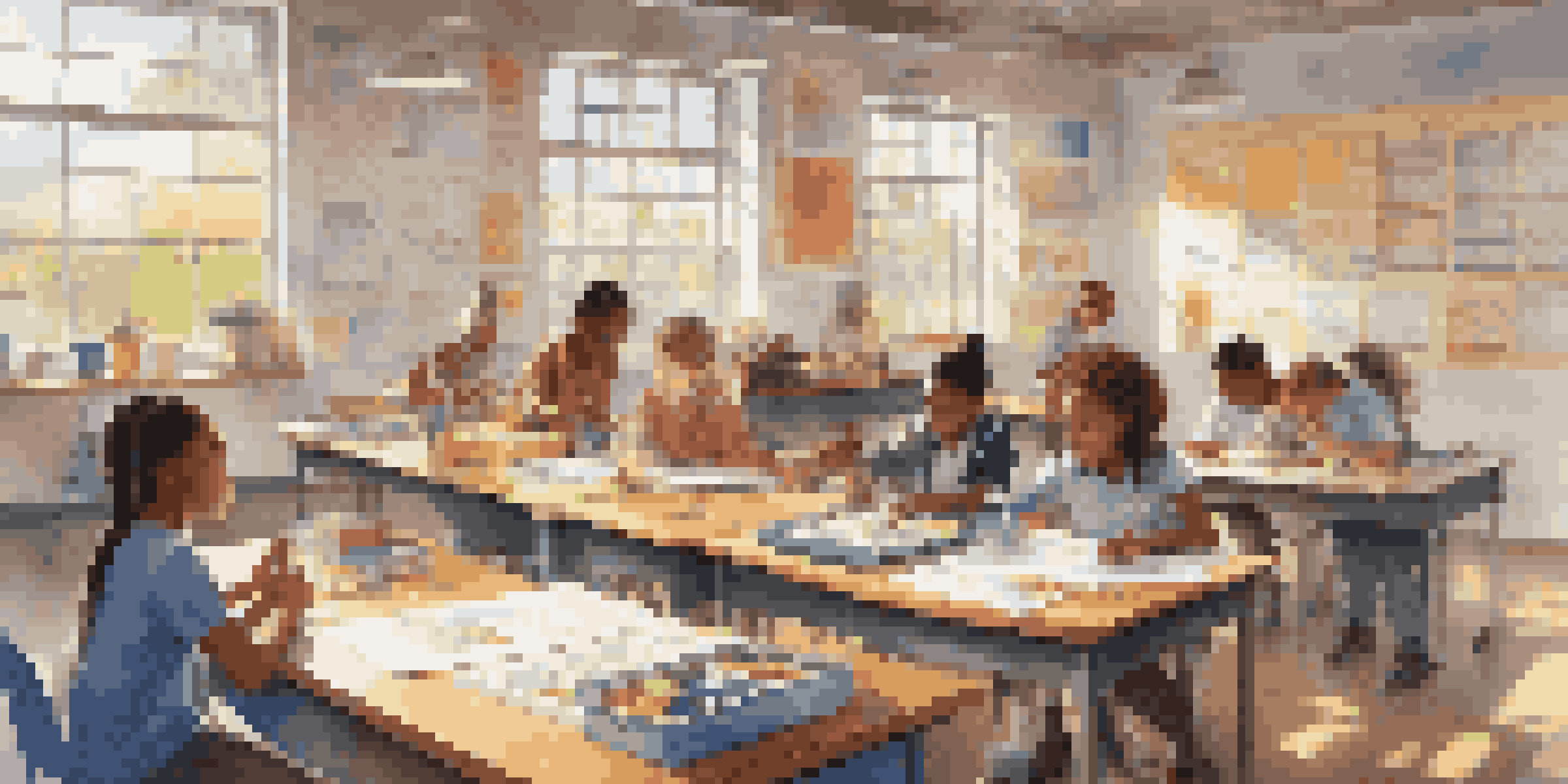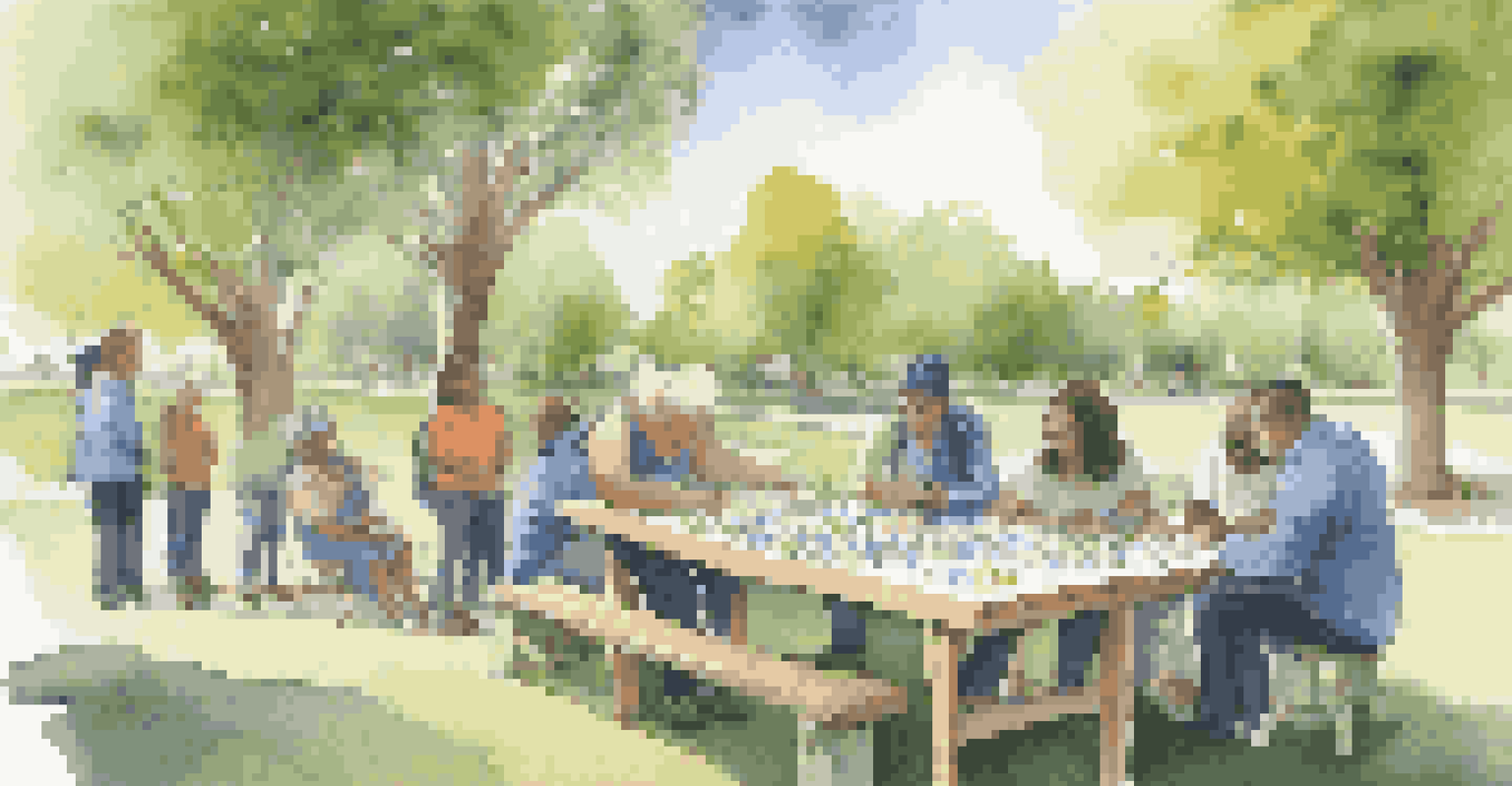Constructivist Learning: Bridging Gaps Through Peer Interactions

Understanding Constructivist Learning in Education
Constructivist learning is an educational philosophy that emphasizes the role of learners in constructing their own understanding. Instead of passively receiving information, students actively engage with content and experiences, shaping their own knowledge. This approach encourages critical thinking and problem-solving skills, making learning a more dynamic process. By doing so, it prepares students for real-world situations where they must apply what they've learned.
Learning is not the product of teaching. Learning is the product of the activity of learners.
At the heart of constructivist learning is the idea that knowledge is not simply transmitted from teacher to student. Instead, it is built through interaction with peers and the environment. For example, when students work together on a project, they share different perspectives that can lead to a richer understanding of the topic. This collaborative effort helps them to challenge their own views and develop a more nuanced understanding.
Moreover, constructivist learning often involves hands-on activities that encourage exploration and experimentation. Think of it like a chef tasting their dish as they cook; they adjust and refine based on the feedback they gather. In the same way, students refine their ideas and knowledge through continuous interaction and feedback from their peers.
The Role of Peer Interaction in Constructivist Learning
Peer interaction is a cornerstone of constructivist learning, as it allows students to engage in meaningful dialogue. When students discuss their thoughts and ideas with one another, they can clarify their understanding and challenge assumptions. This exchange of ideas often leads to deeper insights and promotes a sense of community within the classroom, making learning a shared journey.

For instance, consider a group of students working on a science project. As they collaborate, they each bring unique knowledge and perspectives to the table. One might have a strong grasp of the scientific principles, while another excels in data analysis. Through their interaction, they can fill in each other's gaps, resulting in a well-rounded and comprehensive project.
Active Learning Enhances Understanding
Constructivist learning empowers students to actively engage in their education, promoting critical thinking and problem-solving skills.
Furthermore, peer interactions can boost motivation and engagement. When students feel that their contributions are valued by their classmates, they are more likely to take ownership of their learning. This sense of belonging fosters a positive learning environment where students are encouraged to take risks and explore new ideas without fear of judgment.
Benefits of Collaborative Learning Environments
Collaborative learning environments are a significant aspect of constructivist education, offering numerous benefits. For one, they nurture social skills such as communication, teamwork, and empathy. As students work together, they learn to listen actively and appreciate diverse viewpoints, skills that are invaluable in both academic and professional settings.
The greatest gift is not being afraid to question.
Additionally, collaboration can enhance cognitive development. When students face challenges together, they engage in critical thinking and problem-solving as a group. This collective effort to navigate difficulties not only deepens their understanding but also promotes resilience, as they learn to support one another through obstacles.
Moreover, these environments often lead to improved academic performance. Research has shown that students who participate in collaborative learning tend to achieve higher scores and develop a better grasp of course material. This success can be attributed to the active engagement and shared responsibility that characterize collaborative efforts.
Fostering a Constructivist Learning Atmosphere
Creating a constructivist learning atmosphere requires thoughtful planning and intentionality from educators. Teachers should design activities that encourage collaboration and facilitate peer interactions. For example, group projects, discussions, and peer teaching can all be effective strategies to promote a constructivist approach.
In addition to structured activities, it's essential for educators to cultivate a classroom culture that values curiosity and open-mindedness. By encouraging questions and exploration, teachers can empower students to take charge of their learning. This means creating a safe space for students to express their ideas and learn from mistakes without fear of reprimand.
Collaboration Fosters Community
Peer interaction is crucial in constructivist learning, as it encourages meaningful dialogue and a sense of belonging among students.
Furthermore, educators should model collaborative behaviors themselves. When teachers demonstrate teamwork, respect, and open communication, they set the tone for their students. This modeling can inspire students to engage similarly, transforming the classroom into a thriving community of learners.
Challenges in Implementing Constructivist Learning
While the benefits of constructivist learning are clear, educators may face challenges in its implementation. One significant hurdle is the traditional mindset that often values rote memorization over understanding. Shifting this perspective requires patience and a commitment to fostering an environment where inquiry and exploration are prioritized.
Additionally, classroom dynamics can impact the effectiveness of peer interactions. In some cases, students may struggle with collaboration due to social anxieties or differing levels of engagement. To counter this, teachers must be proactive in guiding group interactions and ensuring that all voices are heard and valued.
Finally, assessing learning outcomes in a constructivist framework can be complex. Traditional testing methods may not adequately capture the depth of understanding that arises from collaborative learning. Educators should develop alternative assessment strategies that reflect the diverse ways students demonstrate their knowledge and skills.
Real-World Applications of Constructivist Learning
Constructivist learning extends beyond the classroom, finding applications in various real-world scenarios. In the workplace, for example, team-based projects often mirror the collaborative nature of constructivist learning. Employees must communicate effectively and leverage their unique strengths to achieve common goals, much like students working together on a project.
Moreover, community-based initiatives frequently utilize constructivist principles. When individuals come together to solve local issues, they draw on their diverse experiences and knowledge. This collaborative problem-solving fosters a sense of ownership and empowerment, illustrating how peer interactions can lead to impactful change.
Real-World Applications Abound
Constructivist principles extend beyond the classroom, influencing teamwork in workplaces and community initiatives through collaborative problem-solving.
In everyday life, constructivist learning can be seen in how people learn new skills. Whether it's picking up a new hobby or navigating a complex task, individuals often seek support from others. This informal learning mirrors the principles of constructivism, highlighting the importance of collaboration and peer interaction in our continuous journey of growth.
The Future of Constructivist Learning in Education
As education continues to evolve, the principles of constructivist learning will likely play an increasingly vital role. With the rise of technology and digital collaboration tools, students are now able to connect with peers from around the world. This global interaction can enrich the learning experience, providing diverse perspectives and insights that deepen understanding.
Moreover, the focus on social-emotional learning aligns closely with constructivist principles. Educators are recognizing the importance of nurturing relationships and emotional intelligence as part of the learning process. By fostering a supportive environment, they can enhance student engagement and promote a sense of belonging.

Ultimately, the future of education may very well hinge on the ability to create collaborative, constructivist learning environments that empower students. As we embrace these principles, we can prepare learners not just for academic success, but for meaningful participation in an increasingly interconnected world.